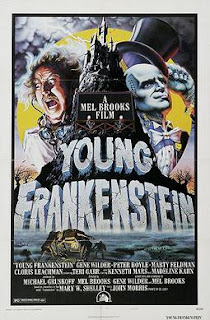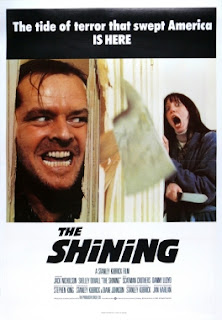After the world tour finished, Dylan’s seminal Blonde on Blonde was released. Dylan was faced with the prospect of repeating the experience he just endured. As fate would have it, Dylan had his motorcycle accident in July 1966. Rumor had it he broke his neck and several other things. I don’t know the extent of his injuries, but Dylan retreated to Woodstock, New York to recover. He also took the time to concentrate on raising his young family out of the spotlight, and he escaped the clutches of “the machine.” This meant there would be no more touring in 1966, which was just fine with him. Nine months later Richard Manuel, Rick Danko, Robbie Robertson and Garth Hudson joined Dylan at his house in Woodstock on worked on new music. When things got too loud for Dylan’s house [I’m sure he got some grief from the Missus for waking the children], Dylan the Hawks relocated to a house in West Saugerties, New York, a house that became known as Big Pink.
Dylan’s songs from The Basement Tapes (1975) original release:
Odds and Ends, Million Dollar Bash, Goin’ to Acapulco, Lo and Behold!, Clothes Line Saga, Apple Sucking Tree, Please, Mrs. Henry, Tears of Rage, Too Much of Nothing, Yea! Heavy and a Bottle of Bread, Crash on the Levee (Down in the Flood), Tiny Montgomery, You Ain’t Goin’ Nowhere, Nothing Was Delivered, Open the Door, Homer, This Wheel's on Fire
Orange Juice Blues [Blues For Breakfast], Yazoo Street Scandal, Katie’s Been Gone, Bessie Smith, Ain’t No More Cane, Ruben Remus, Don’t Ya Tell Henry, Long Distance Operator
What was the reason for the recordings in the first place? Was it music therapy for both Dylan and the Hawks as they dried out and detoxed? Was Dylan creating demos for other people? I suspect it was a bit of both. When one looks at the complete song list of “the Basement Tapes,” one finds that Dylan and company covered a lot of musical ground just for the hell of it. There are songs from A.P. Carter, Johnny Cash, Hank Williams, Hank Snow, John Lee Hooker, Blind Lemon Jefferson, Ian & Sylvia, Pete Seeger, Tim Hardin, Bo Diddley, and Curtis Mayfield, as well as quite a few traditional songs from the public domain.
Several songs from these sessions ended up being recorded and released by other artists. Dylan and his manager Albert Grossman were co-owners of Dwarf Music, a music publishing company that provided songs for other people. The Byrds recorded You Ain’t Goin’ Nowhere and Nothing Was Delivered for 1968’s Sweetheart of the Rodeo. They later recorded This Wheel’s On Fire for the follow-up, 1969’s Dr. Byrd & Mr. Hyde [my favorite version of this song – if you can find it, get it!]. When the Hawks got their own recording contract [and became The Band], three of these songs found their way onto Music From Big Pink – Tears of Rage, I Shall Be Released, and This Wheel’s On Fire. Manfred Mann recorded Quinn the Eskimo [The Mighty Quinn]. Fairport Convention did Million Dollar Bash, while Peter, Paul & Mary did Too Much of Nothing. These were among a fourteen-song demo that made the rounds to people who might be interested in recording them.
So between April and October of 1967, Dylan and the Hawks recorded all of these songs. When they were done, they sat unreleased. These songs were all of demo quality. Some of the recordings are pretty rough. They weren’t intended for release. But in 1969 there appeared a Dylan bootleg called Great White Wonder, some of the songs of which came from the Basement Tapes. Once the songs from 1967 saw the light of day, so began the mythology of this great, mysterious treasure trove of unreleased Dylan music. While the music from the Basement Tapes was unintended for release, they did show that Dylan was heading in a different direction with his music, as is evident on 1967’s John Wesley Harding. The music, some of which was re-recorded by The Band for their debut Music From Big Pink, shows a group of musicians going against the grain in 1967. This was the year of The Beatles’ Sgt. Pepper, Cream’s Disraeli Gears, the Stones’ Their Satanic Majesties Request, the debut of The Doors and all other kinds of psychedelia. Such was the effect of Music From Big Pink that once he heard it, Eric Clapton decided to leave Cream. The Beatles did the White Album, and the Stones started their four-year winning streak of great releases with Beggars Banquet.
The tapes sat unreleased until 1975, when Robbie Robertson compiled the original release. I don’t know his motivation for including the songs from The Band on this release. These songs were recorded in a professional studio in either New York or Los Angeles, not in Big Pink’s basement. One can find these very same recordings on the expanded releases of Music From Big Pink and Cahoots. The 1975 release was just the tip of the iceberg. Some prominent songs were missing - I Shall Be Released and Quinn the Eskimo [The Mighty Quinn] come immediately to mind. Why did Robbie Robertson leave those songs off? Only he knows.
There are two versions of The Basement Tapes released in November 2014. There is the behemoth, six disc version [The Basement Tapes Complete] that contains 139 songs [there are multiple takes of several songs]. This version is for the uber completest. If you’re like me and can’t afford this monster, there is a two disc version [The Basement Tapes Raw]. The Basement Tapes Raw contains all the Dylan songs from the 1975 release. These songs come are either alternate takes, “restored” versions, or “without overdubs.” The alternate takes are self-explanatory. Some of the songs on the 1975 release received some overdubs from The Band. Those overdubs were removed for the 2014 release. Other songs from the 1975 release were “restored” to their original state. In this context that means they had the echo removed, and they were restored to the original stereo mixes from the mono versions that appeared in 1975. Unless you’re hardcore and listen very closely to each and every track on headphones, the differences between what was released in 1975 and what was released last month are negligible.
One Too Many Mornings / I Don't Hurt Anymore / Ain't No More Cane / Dress It Up, Better Have It All / I'm Not There / Johnny Todd / Quinn the Eskimo / Get Your Rocks Off / Santa-Fe / Silent Weekend / I Shall Be Released / Minstrel Boy / All You Have To Do is Dream / 900 Miles From My Home / One For the Road / I'm Alright / Blowin' In the Wind / You Ain’t Goin’ Nowhere [Alternate Version] / Folsom Prison Blues / Don't Ya Tell Henry / Baby, Won't You Be My Baby / Sign On the Cross
While some of these songs are released to the public for the first time, some of these have been released before, to include:
- Minstrel Boy first appeared on The Bootleg Series Vol. 10 – Another Self Portrait (1969–1971)
- I Shall Be Released and Santa-Fe first appeared on The Bootleg Series Volumes 1–3 (Rare & Unreleased) 1961–1991
- I'm Not There first appeared on the I'm Not There soundtrack in 2007
Interesting takes:
- A six-minute, full band shuffle of Blowin’ in the Wind
- Johnny Cash’s Folsom Prison Blues
- Sign on the Cross
- I Don’t Hurt Anymore
- Get Your Rocks Off [very silly]
- Ain't No More Cane [Levon Helm sang the version that appeared on the 1975 release]
- Don’t Ya Tell Henry [Levon Helm sang the version that appeared on the 1975 release]
- Full band version of One Too Many Mornings [originally appeared on The Times They Are A-Changin’ (1964)]
Unlike the 1975 release where Dylan and The Band received equal billing, this is a Bob Dylan release. This begs the question – is there a bunch of unreleased music from The Band? Perhaps time will tell. The Basement Tapes Raw is a good companion to The Basement Tapes from 1975, but if I was going to compile The Basement Tapes Raw, I would not include any titles that appeared in 1975 or on any other releases. As it stands now, of the 38 titles released on The Basement Tapes Raw, 16 came out in 1975, 4 came out on other releases. That’s 20 more previously-unheard/unreleased songs that Columbia could have put out. I guess that’s their way of getting you to buy the big box.













